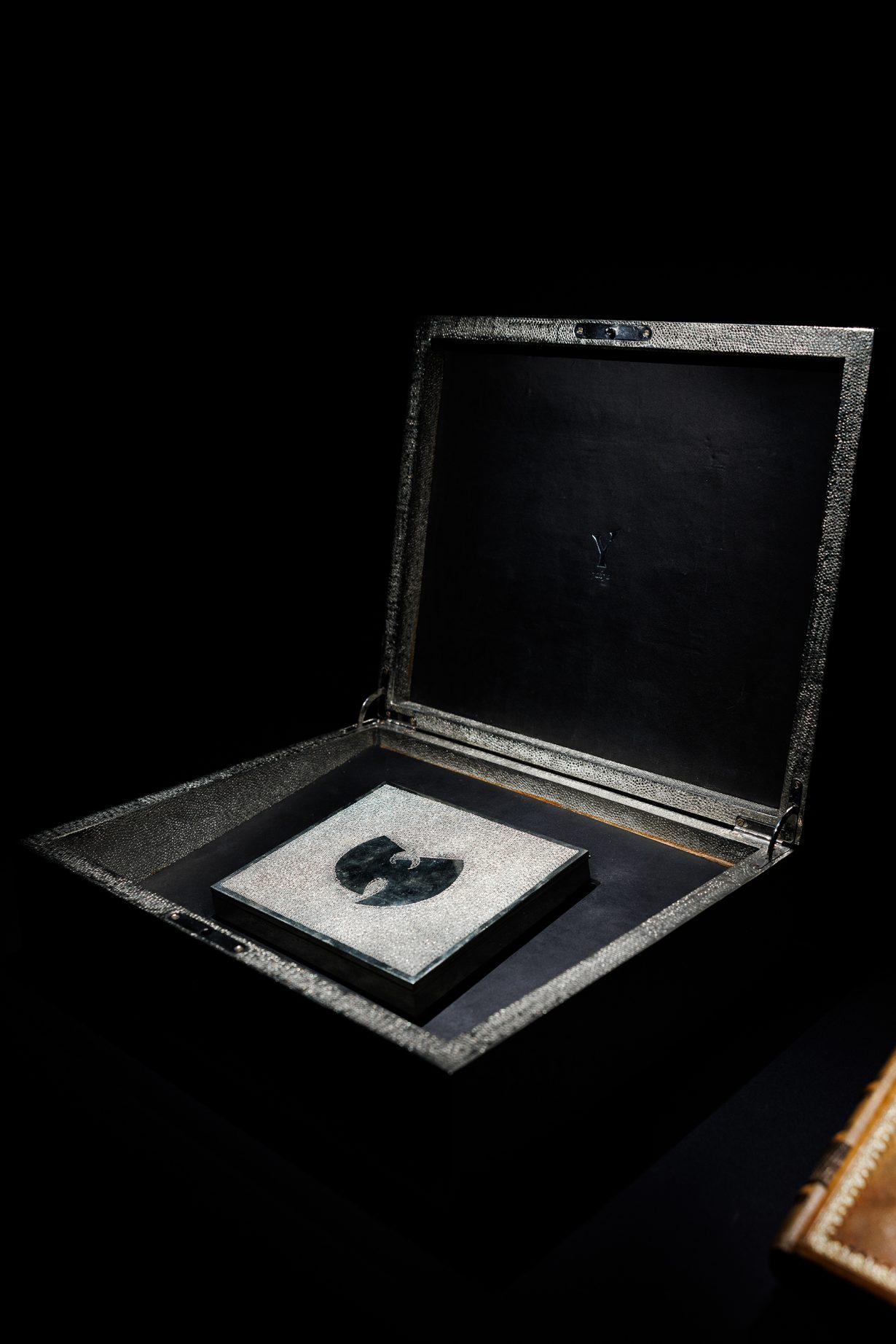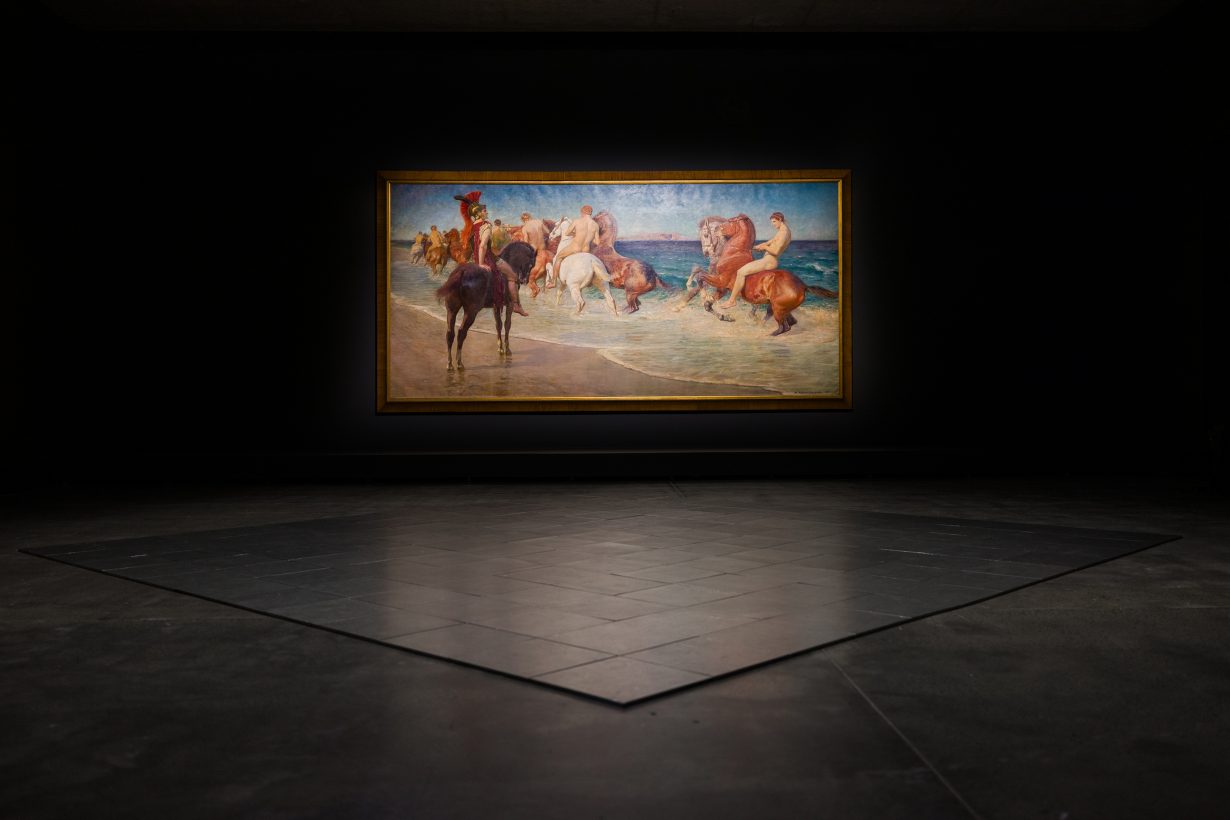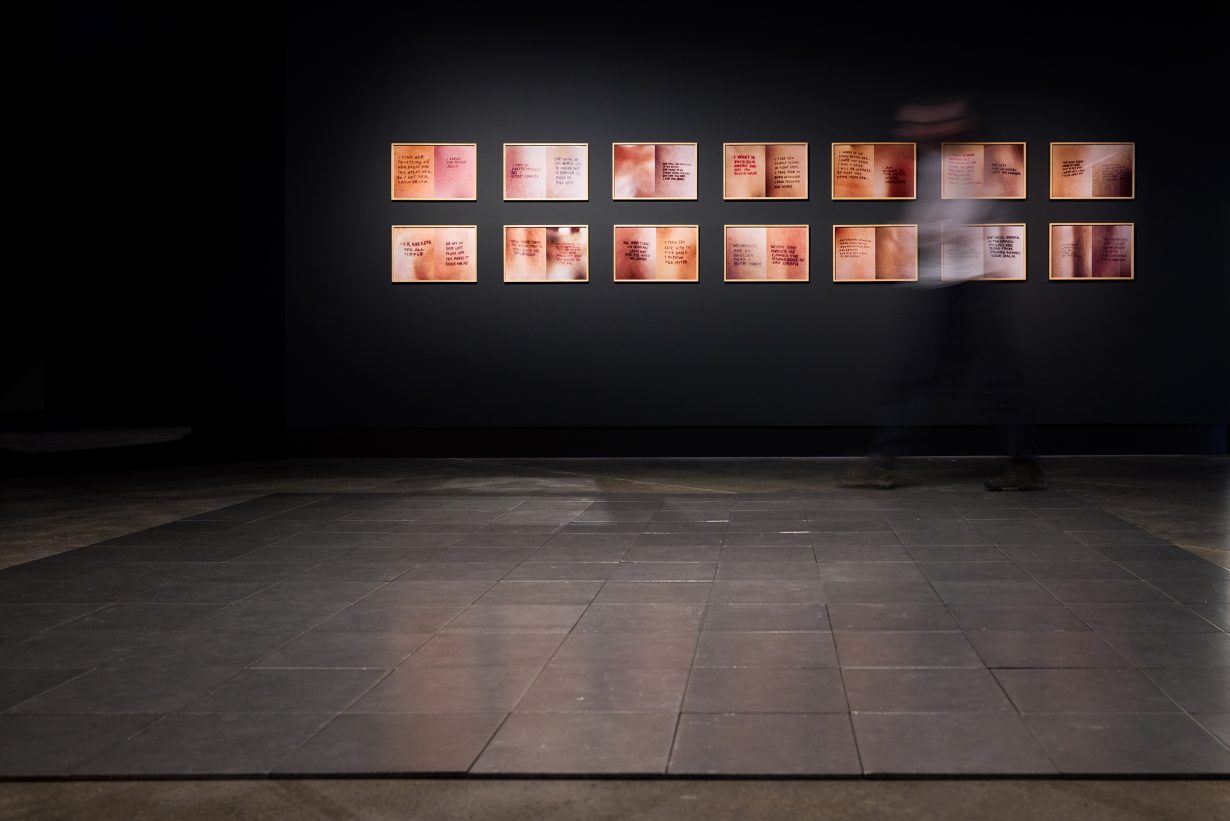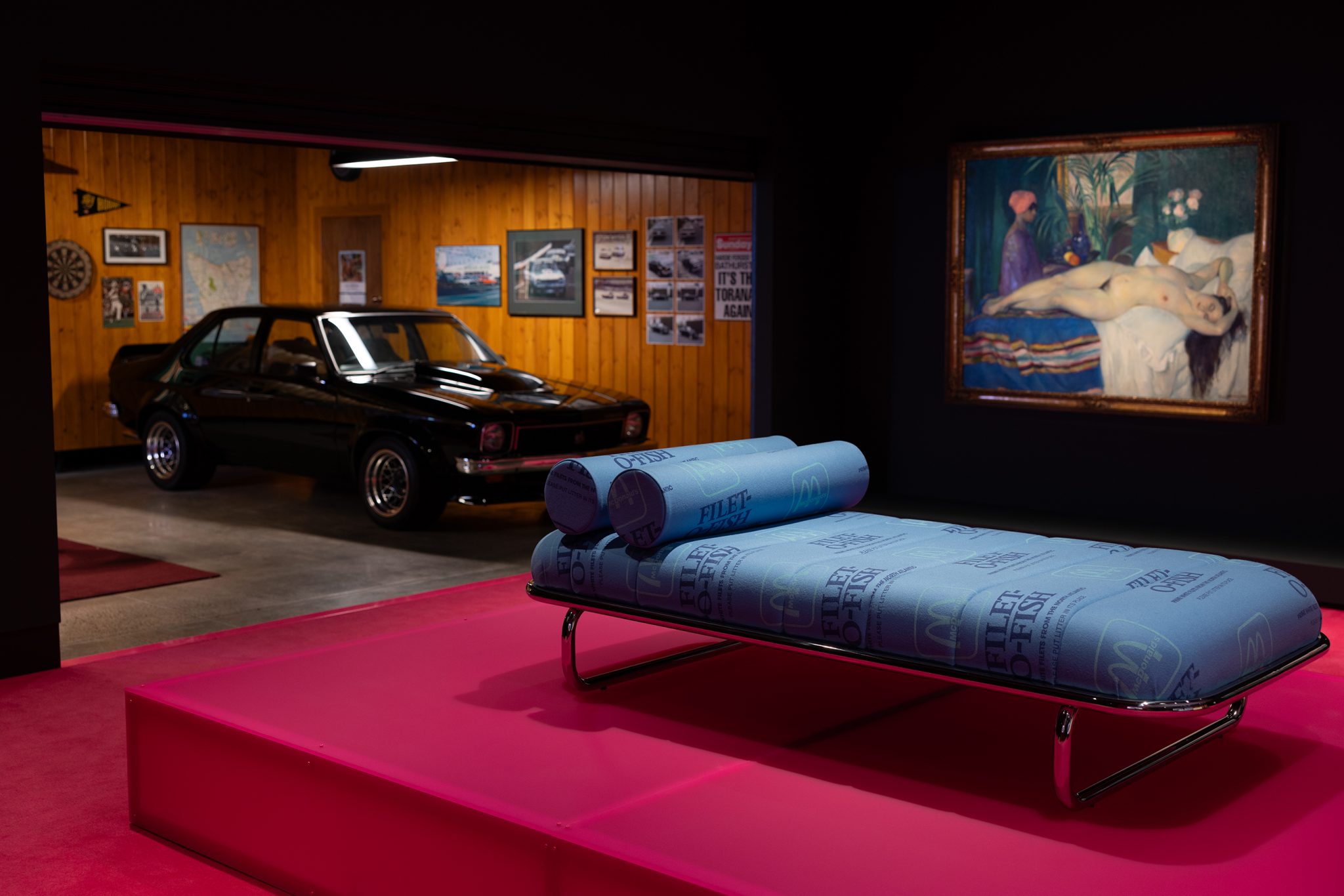Featuring the only physical copy of Wu-Tang Clan’s mythical album, Namedropping at Mona, Hobart explores how art and brands are deployed as signals for garnering power, sex and reputation – as if art were never anything more than status
Mona – Australia’s largest privately owned art museum – proffers itself as ‘a temple to secularism, rationalism and talking crap about stuff you really don’t know very much about’. Launched in 2011 by David Walsh, a professional gambler, Mona houses an immense collection of 3,200 artworks and objects, and showcases pieces from antiquity to the present day (including, notably, an installation that recreates the human digestive process – Wim Delvoye’s Cloaca Professional, 2010). Presenting itself as the populist alternative to the po-faced worlds of hushed galleries, hallowed institutions and arts academia, it’s a place where gallerygoers can see weird, transcendent or pervy artworks, access ‘Art Wank’ or Walsh’s ‘Gonzo’ takes via an app and rate whether they ‘love’ or ‘hate’ a piece.
What separates Mona from other art institutions and guides its curatorial method is a conviction that ‘art is deeply founded in human biology, rather than being purely cultural’, and Namedropping explores this overarching principle through the idea of status-seeking. Devised by a team of curators with input from Walsh, the exhibition highlights the way art and brands are deployed as signals for garnering power, sex and reputation. When we ‘namedrop’, whether by quoting The Communist Manifesto (1848) or by flashing an autographed LP, we’re tapping into an instinct to leverage our position among our tribe.
A maximalist exhibition of over 200 artworks and objects, Namedropping includes an autographed bat signed by 1980s cricket stars, an eighteenth-century Belgian tapestry, an Egyptian votive figure of Osiris and a 1977 Holden Torana. There is Darren Sylvester’s chrome-legged lounge with its Filet-O-Fish blue-wrapper upholstery (included here because pop singer Katy Perry reclined on it at the 2018 Melbourne Art Fair); Polly Borland’s photograph of Queen Elizabeth II from 2001; and Vincent Namatjira’s painting Vincent & Donald (Indulkana) (2018), a satirical depiction of former president Trump riding alongside the artist in a Dodge Ute.

In a coup for Mona, the exhibition also features one very special CD, complete with carry case and leather-bound book. The Wu-Tang Clan’s Once Upon a Time in Shaolin was recorded between 2007 and 2013, mostly in Staten Island, New York. Motivated by a desire to elevate music to the status of a singular artwork, Wu-Tang destroyed the master files, drew up a legal stipulation that the album couldn’t be used commercially for 88 years and put the only double-CD set up for sale. (The album was bought in 2015 by Martin Shkreli, the notorious American ‘pharma bro’ charged for financial crimes, seized by the US government in 2018 and sold to the global NFT collective PleasrDAO in 2021 for $4 million.) Mona’s much-hyped decision to give a select number of gallerygoers the chance to listen to a 30-minute mix of the album for free elevates Once Upon a Time in Shaolin to the realm of gilded rarity. Recorded in the style of 1990s hip-hop releases, the epic mix has all the trappings of what makes Wu-Tang unique, albeit wrapped in the inflated appeal of a scarce commodity: excerpts from Kung Fu movies, soaring strings, funk guitar lines, the sounds of cop chases and references to Chinese mythology.
Namedropping’s exhibition layout mimics the irreverent everything-all-together presentation of Mona more broadly, with artefacts and contemporary artworks set alongside memorabilia and letters from illustrious figures (the coffin of Egyptian priest Ankh-pefy-hery, for example, is placed opposite the helmet worn by Heath Ledger in Ned Kelly, from 2003). A multitentacled beast of all things status, from Cartier jewellery to geopolitical power plays, it’s preoccupied with the way reputation and value are intrinsically linked to an object’s aura: what can be gleaned or signalled by the hand of the maker – by a David Bowie lyric written out on paper – and what can be disrupted or challenged when there’s a lack of authenticity, such as in Juan Davila’s imitative painting Picasso Theft (1991) or Sherrie Levine’s photographed reproductions of Walker Evans’s iconic portraits.


Namedropping also attempts to reckon with the ‘dark consequences’ of status-seeking. That is, how biological urges can be easily manipulated or warped in the context of colonialism, violent misogyny and racial oppression. A group of nineteenth-century colonial portraits of Indigenous members of Archibald Meston’s ‘Wild Australia Show’ (1892–93), for example, reiterate the abhorrent racial hierarchies of Australia’s past, which were shaped by a Darwinian belief in the ‘scientific’ classification of superior civilisations. Carl Andre’s 144 Tin Square (1975), a sheet metal sculpture made up of 144 tin squares, is placed next to Jenny Holzer’s staged photographic series Lustmord (1994), a horrifying and contentious exploration of rape as an act of war, which presents the voices of perpetrator, victim and observer written in ink on human skin (the somewhat tenuous link to status being the various positions each of these voices holds and the ‘tribalism’ that underpins war). Here, Andre’s work seems to be on display as a comment on his response to his wife’s death, artist Ana Mendieta – ‘I am a very successful artist and she wasn’t’ – as much as it is for the way its floor placement, designed to be walked on, undermines the sanctity of art.
The rapid-fire presentation of so many variations on status, each with differing emotional registers, makes Namedropping a dizzying experience. Its essentialist premise – ‘culture gives us an excuse; biology gives us a motive’ – is a somewhat thin and unsatisfying connector, a descriptive framework that seems to necessitate continual, almost defensive justification rather than an investigation into what might follow: why we might need, as the exhibition text claims, to ‘stop lying to ourselves about the base urges and better angels of our human nature’, whether it’s desirable or even achievable to transcend them and how other less-egotistical motivations for creativity and identity formation (sacrifice, generosity, worship, care and grief, to name but a few) might fit into the picture. This sense of disorientation is further heightened by Namedropping’s montagelike display, which, while perhaps fulfilling Mona’s overall aim to ‘de-privilege any perspective’, feels like accumulation for the sake of accumulation. What once felt innovative and distinctive in 2011 now risks mirroring the exhausting maw of social media – the online feed with its baseline requirement to toggle between LOLs, extreme violence and sponsored posts. That is, without stronger juxtaposition, without dissonance creating new meaning, Namedropping skirts dangerously close to the flat atemporal no-place of the scroll: a mode of looking where artefacts are demoted to mere objects, and artworks, losing their bearings, become simply ‘things’, bobbing in the digital stream.
Namedropping at Mona – Museum of Old and New Art, Hobart, through 21 April 2025
